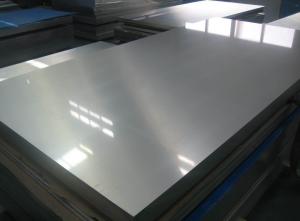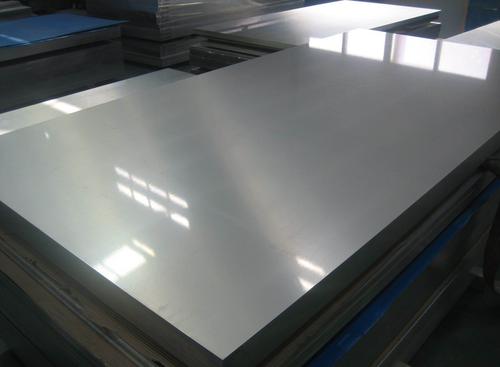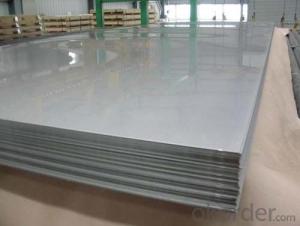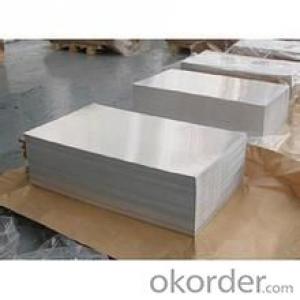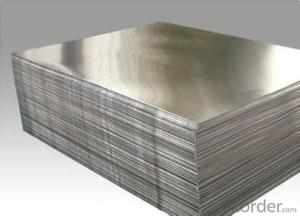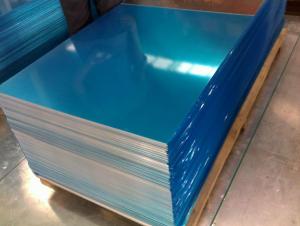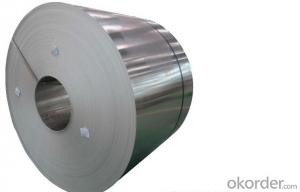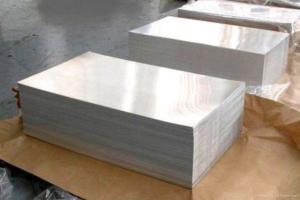3/8 Insulated Aluminum Sheets - Various Kinds of Mill Finished Aluminum Sheet for Different Applications
- Loading Port:
- China main port
- Payment Terms:
- TT or LC
- Min Order Qty:
- 5 kg
- Supply Capability:
- 10000 kg/month
OKorder Service Pledge
OKorder Financial Service
You Might Also Like
1. Description of Various Kinds of Mill Finished Aluminium Sheet for Different Applications
Alloy: 1xxx, 3xxx, 5xxx, 8xxx
Temper: H12, H14, H16, H18, H24, O, H32
Thickness: 0.2-4.0mm
Width: 200-1600mm
2. Application of Various Kinds of Mill Finished Aluminium Sheet for Different Applications
Used in construction and decoration,hardware and electric appliances manufacture,automobile manufacture and other industrial and civil purposes,such as electronic capacitor,composite cooker,rice cooker,refrigerator,computer casting,telecommunication equipment,lamp shade,air-conditioner,cosmetics cover and box,air-conditioner radiator,inner container of disinfecting cabinet,ceiling board,automobile motherboard,cover board and top board,etc.
3. Feature of Various Kinds of Mill Finished Aluminium Sheet for Different Applications
Surface Quality:be free from Oil Stain, Dent, Inclusion, Scratches, Stain, Oxide , Breaks, Corrosion, Roll Marks, Dirt Streaks and other defect which will interfere with use.
Package:Standard Export wooden Case/Pallet
Remark: Specific requirement of alloy, temper or specification can be discussed at your request.
4. Certificate:
SGS and ROHS(if client request, paid by client), MTC(plant provided), Certificate of Origin(FORM A, FORM E, CO), Bureau Veritas and SGS (if client request, paid by client), CIQS certificate
5. Image of Various Kinds of Mill Finished Aluminium Sheet for Different Applications
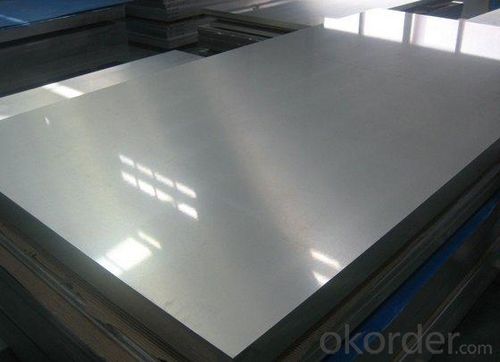
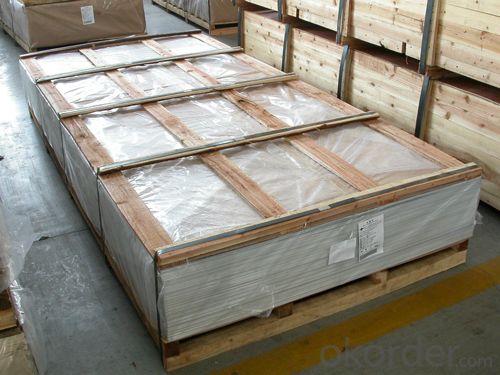
6. FAQ
1) What is the delivery time?
Dpends on actual order, around 20 days
2) What is the QC system:
We have QC staff of 20 persons and advanced equipment, each production is with MTC traced from Aluminum ingot lot.
3) What market do you mainly sell to?
Australia, America, Asia, Middle East, Western Europe, Africa etc
- Q: How can I make aluminum oxide?
- It turns out to be surprisingly difficult to do, because aluminum forms a skin of oxide which retards further oxidation. One way might be to react aluminum with sulfuric acid, getting aluminum sulfate in solution. Treat this with barium hydroxide; barium sulfate will precipitate out, leaving aluminum hydroxide in solution. Dry this and heat it, driving off the hydroxide as water and leaving aluminum oxide. I haven't tried this, so cannot guarantee that it will work.
- Q: Describe the steps involved in installing aluminum sheets on a roof.
- <p>Installing aluminum sheets on a roof involves several key steps: 1) Inspect the roof structure to ensure it can support the new material. 2) Remove any existing roofing material. 3) Install roof underlayment to protect against moisture. 4) Position the first aluminum sheet at the lowest point of the roof, aligning it with the eaves. 5) Secure the sheet using clips or screws, ensuring a watertight seal. 6) Continue installing sheets up the roof, overlapping each by at least 2 inches for a secure fit. 7) Cut and fit sheets around vents, pipes, and other roof protrusions. 8) Install flashing and trim to finish edges and seal the roof. 9) Check for proper alignment and secure all fasteners. 10) Clean up debris and inspect the installation for any gaps or leaks.</p>
- Q: What are the different types of patterns available for aluminum sheets?
- There are several different types of patterns available for aluminum sheets, including diamond, tread, stucco, and perforated. Each pattern offers unique aesthetic and functional properties, catering to various applications and design preferences.
- Q: Are aluminum sheets suitable for cryogenic applications?
- Yes, aluminum sheets are commonly used in cryogenic applications due to their excellent low-temperature properties, including low thermal expansion and good resistance to cryogenic liquids.
- Q: What is the elongation percentage of 101 aluminum sheets?
- The elongation percentage of 101 aluminum sheets indicates the extent to which the material can deform or stretch before it breaks. Factors such as sheet thickness and the manufacturing process can influence the exact elongation percentage of 101 aluminum sheets. Nonetheless, 101 aluminum alloy is widely recognized for its remarkable formability and exceptional elongation properties. Generally, it demonstrates elongation percentages that range from 10% to 30%, allowing the material to stretch by that proportion of its original length before it fractures.
- Q: This question asks about the various applications of aluminum sheets within the construction industry.
- <p>Aluminum sheets are widely used in construction for their durability, lightweight, and resistance to corrosion. They are commonly used for roofing and cladding due to their ability to withstand harsh weather conditions. Aluminum sheets are also used in the manufacturing of window frames and doors because of their strength and thermal insulation properties. Additionally, they are utilized in the construction of scaffolding and temporary structures due to their ease of assembly and disassembly. In interior design, aluminum sheets can be used for decorative purposes, such as wall panels and ceilings. Their recyclability also makes them an environmentally friendly choice for construction projects.</p>
- Q: Are 101 aluminum sheets suitable for conductive heat transfer applications?
- 101 aluminum sheets are not appropriate for applications involving conductive heat transfer. This specific aluminum alloy, known as 101 aluminum, is commercially pure and has a low electrical conductivity. Consequently, it is ineffective at efficiently conducting heat, rendering it unsuitable for situations requiring heat transfer. Instead, it is advisable to employ alloys with higher thermal conductivity, such as 6061 or 7075 aluminum, for conductive heat transfer applications. These alloys possess superior heat transfer properties and are commonly utilized in heat sinks, heat exchangers, and other scenarios demanding efficient heat transfer.
- Q: Are the aluminum sheets suitable for manufacturing aircraft wings?
- Yes, aluminum sheets are suitable for manufacturing aircraft wings. Aluminum is widely used in the aerospace industry due to its excellent strength-to-weight ratio, corrosion resistance, and high thermal conductivity. These properties make it an ideal choice for constructing lightweight yet durable aircraft components, such as wings. Aluminum sheets can be easily formed, welded, and machined, allowing for complex wing designs. Additionally, aluminum's low density helps reduce the overall weight of the aircraft, improving fuel efficiency and maneuverability. Overall, the use of aluminum sheets in manufacturing aircraft wings is a common and proven practice in the aviation industry.
- Q: Can aluminum sheets be etched or engraved?
- Yes, aluminum sheets can be etched or engraved. Etching or engraving on aluminum sheets is a process that involves removing some of the material from the surface using acid or a high-powered laser. This can be done to create intricate designs, patterns, or even text on the aluminum sheet. The etching or engraving process can be used for various applications, such as signage, decorative pieces, or industrial parts. The resulting etched or engraved design on the aluminum sheet can be further enhanced by adding color or other finishes to create a desired look.
- Q: Okay guys i need to rapir a crack on an aluminum pipe , would durafix do the job ?? If so where can i get this durafix ? at my local home depot ?
- You can order it online. It works acceptably well, though it's obviously not as good as bona fide welding. You can also use tin+zinc hard solder, for this- you need a special soldering flux specifically desgined for soldering aluminum. You can order aluminum soldering kits online also. You might also be able to find a welding supply store in your area and they would probably carry Al soldering kits in stock. I feel that soldering would probably give you more reliable results in this case. Solder is a lot thinner and has better wetting action than the durafix alloy. This means that solder will be more likely to flow into the crack itself and completely seal it, whereas the durafix may simply lie on top of the crack. I think durafix technically qualifies as brazing since it melts at a lower temperature than the aluminum itself. However, you will also need to buy a propane torch, that'll probably cost around 30-40$ at a hardware store. Plus the cost of the brazing metal which is around 12-20$. so you're looking at 30-50$ probably. This might be a bit of a fun- DIY project if you feel it's worth some time and practice on your part. On the other hand any welding shop can simply TIG weld your pipe for about 20$ and it will only take them a few minutes. So having the professionals do it will be much faster, cheaper, and almost certainly a better quality repair than if you attempted to DIY.
Send your message to us
3/8 Insulated Aluminum Sheets - Various Kinds of Mill Finished Aluminum Sheet for Different Applications
- Loading Port:
- China main port
- Payment Terms:
- TT or LC
- Min Order Qty:
- 5 kg
- Supply Capability:
- 10000 kg/month
OKorder Service Pledge
OKorder Financial Service
Similar products
Hot products
Hot Searches
Related keywords
